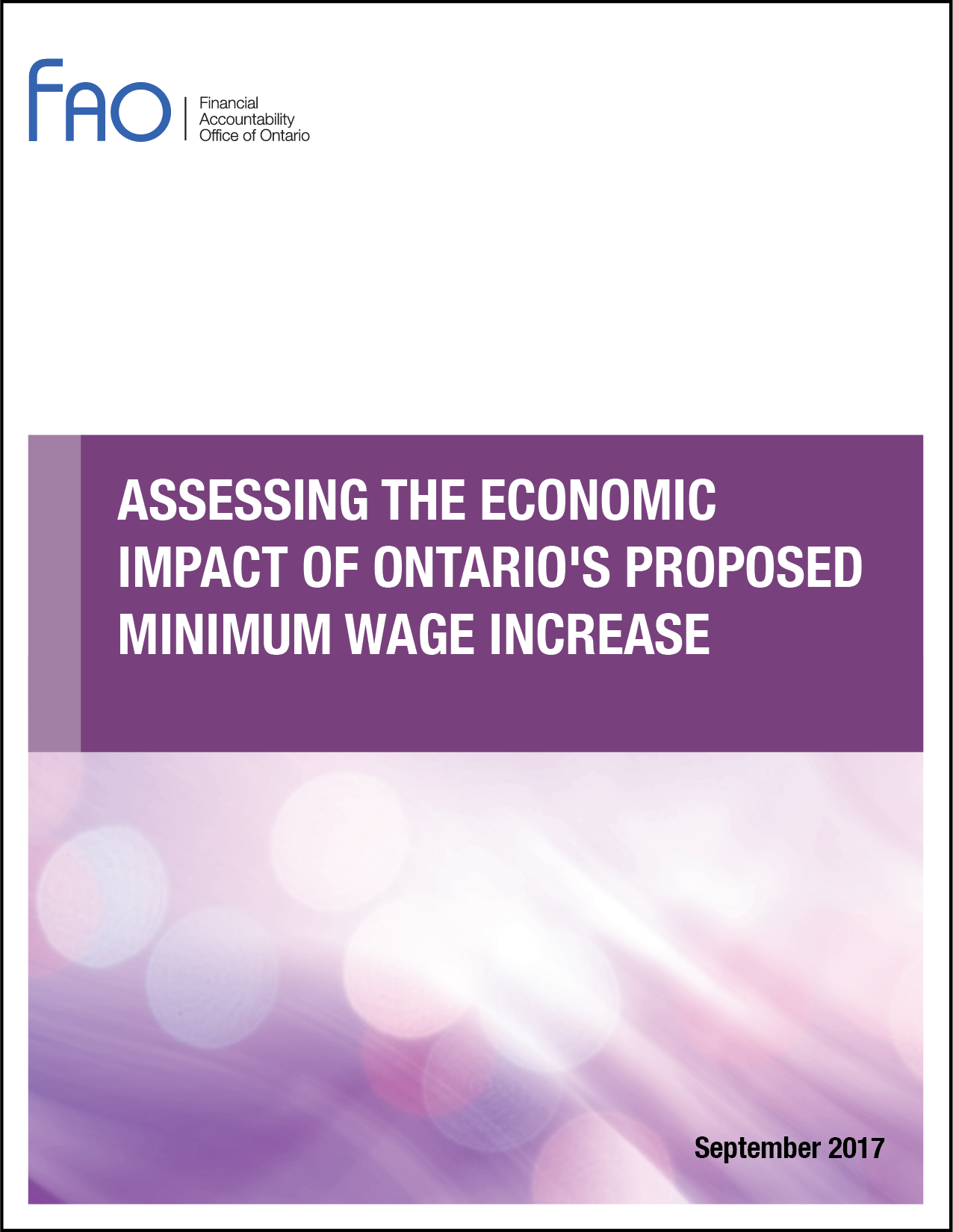Assessing the Economic Impact of Ontario’s Proposed Minimum Wage Increase

This report provides an analysis of the economic impacts of the proposed minimum wage increase.
Assessing the Economic Impact of Ontario’s Proposed Minimum Wage Increase, Financial Accountability Office of Ontario, 2017.

